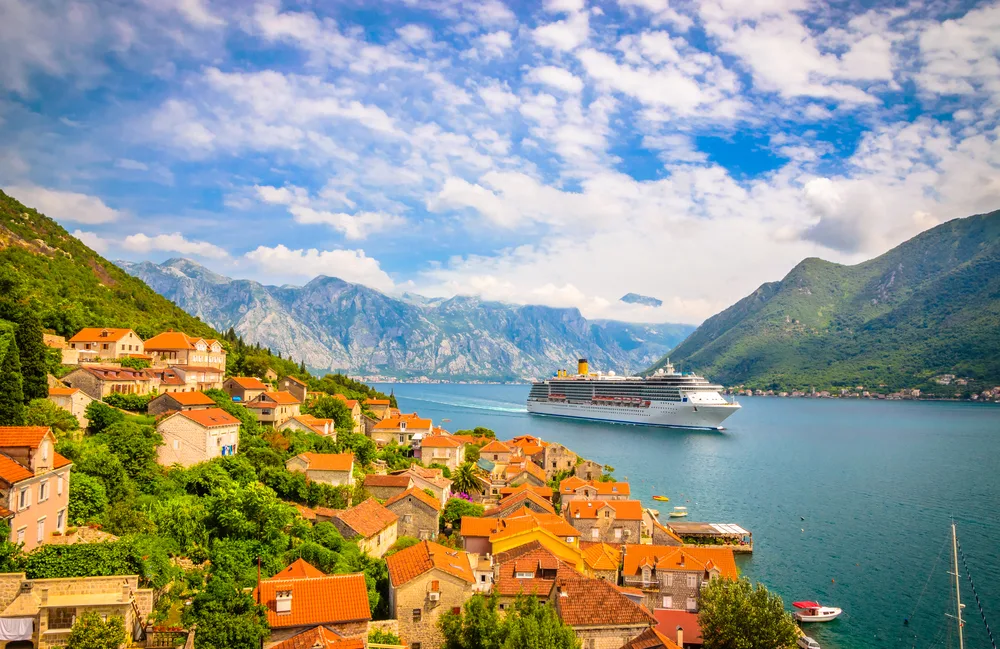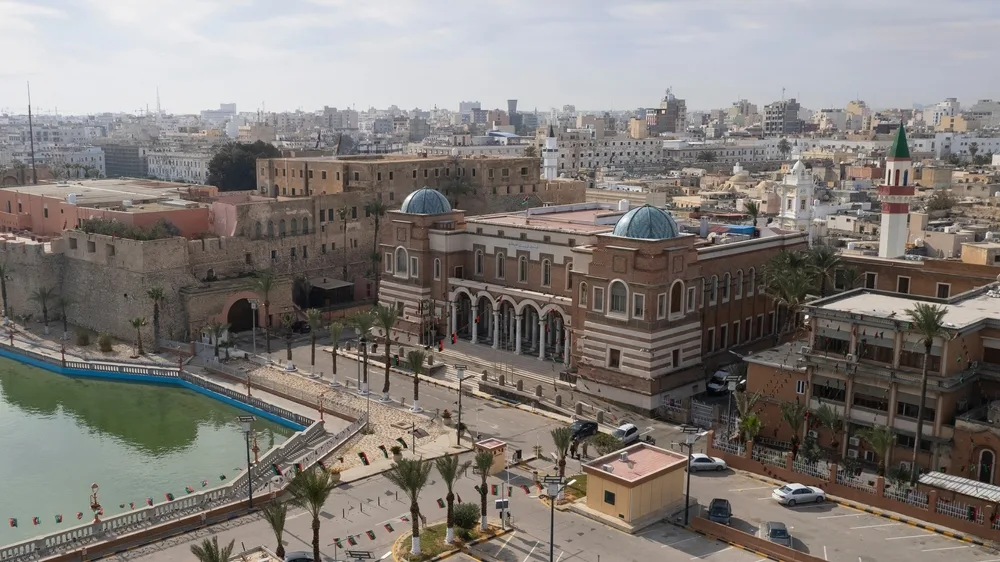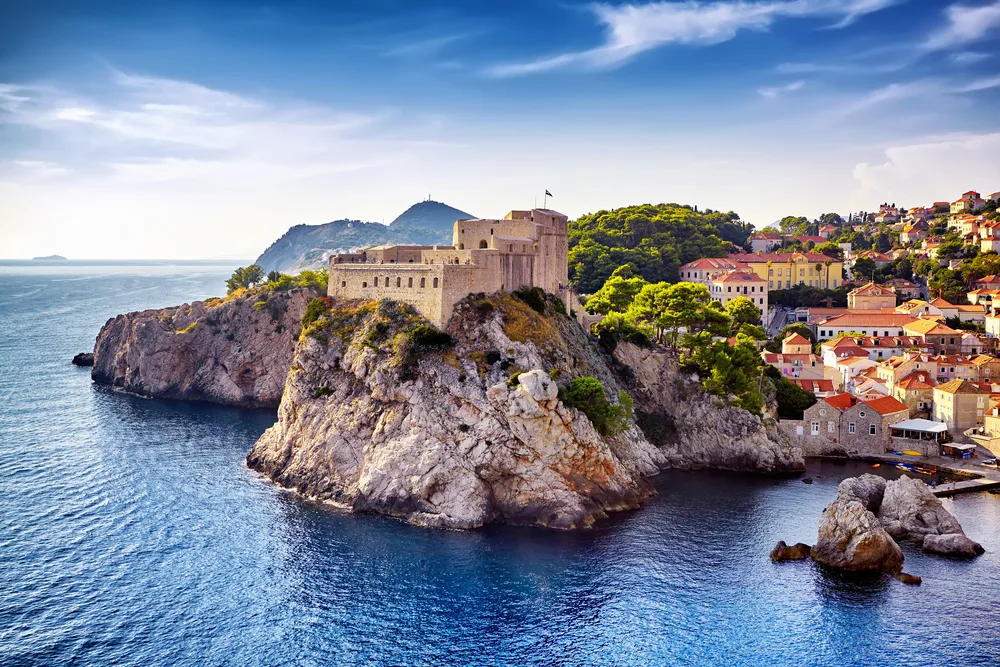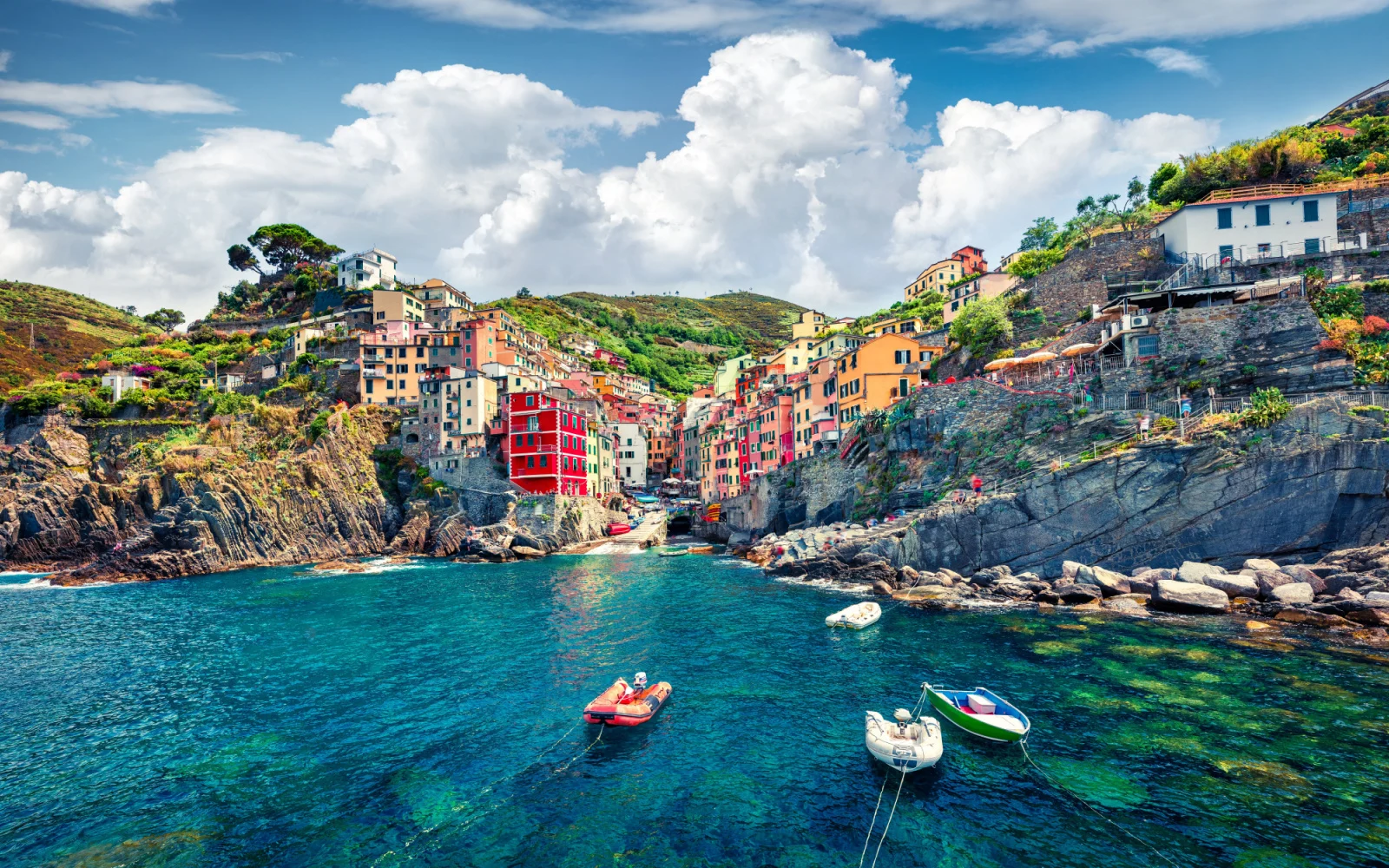The Mediterranean Sea is one of the most visited vacation destinations in the world. According to some estimates, over 400 million visited the region in 2019. But while it’s popular, is it safe to visit? Read on to find out.
Is the Mediterranean Safe to Visit in 2025?

Sven Hansche/Shutterstock
Yes. Parts of the Mediterranean are very safe to visit, while others are not. Some countries are very safe for tourists, with only petty crime and pickpocketing as potential dangers.
Other countries may have ongoing problems such as civil strife that make them less safe to visit. Researching your destination is important when planning your Mediterranean vacation.
There are 23 countries surrounding the Mediterranean Sea, with very different political contexts and safety situations. A good place to start researching the safety of visiting the Mediterranean is to look at travel advisories for countries in the region.
The U.S. State Department has travel advisories for most countries in the world, including in the Mediterranean. You can look at the map of all of its travel advisories to get a feeling for which countries are safe and which ones are not.
Some countries in the region are under Level 4: Do Not Travel advisories, the highest level of advisory, from most governments in the world.
These countries are:
Both of these countries are undergoing active civil war, so it’s better to look elsewhere for your beach vacation.
Some countries are under Level 3: Avoid Non-Essential Travel advisories for various reasons. These include:
- Egypt, due to political instability, arbitrary detention, and the risk of terrorism
- Parts of Algeria due to the risk of kidnapping and terrorism in certain regions
- Lebanon due to the risk of civil unrest, terrorism, potential armed conflict, and high crime rates
Meanwhile, other countries in the Mediterranean region are mostly safe or completely safe to visit. The safety of visiting the Mediterranean depends heavily on the area and country you are visiting.
As a rule, the Middle Eastern and African coasts tend to be a bit more dangerous (Tunisia and Morocco are the exceptions), but it is still possible to visit this part of the Mediterranean if you are careful.
When talking about the safety of visiting the Mediterranean, it’s important to talk about the safety of the sea itself. The Mediterranean Sea is an enclosed sea, which makes it much calmer than swimming in the open ocean.
There are some dangerous aquatic species, such as stinging jellyfish and sharks, but they tend to leave swimmers alone unless you disturb them. However, the Mediterranean Sea can also be dangerous.
Storms can pick up quickly and intensely, and the regions around the Mediterranean often suffer from high winds, torrential rain, and flooding due to intense storms.
Human rights groups have named it the world’s most dangerous sea crossing due to the thousands of refugees that drown in the tempestuous waters each year. It’s important to treat the waters of the Mediterranean with healthy respect.
If you are going out sailing, make sure that you are going with an experienced captain or tour company that knows what to do if a storm comes up.
Only swim in areas that are safe for swimming. Practice safe swimming practices such as checking the depth of the water before diving in.
Crime in the Mediterranean

Olena Znak/Shutterstock
It’s hard to generalize about crime in the Mediterranean because the region is so vast and covers so many areas. Some parts have problems with crime, while others experience barely any crime.
Crime fluctuates widely in the Mediterranean. The same sea holds Corsica, which has the highest murder rate per capita in Western Europe, and Malta, whose homicide rate is just 0.4 incidents per 100,000 people.
When planning your vacation, it’s a good idea to get specific about researching crime and narrowing it down to the destinations you have in mind, because the crime situation around the Mediterranean is so different.
There are a few trends that are similar in many Mediterranean countries.
One is the prevalence of organized crime in the Mediterranean. The region boasts areas that are stereotypically associated with organized mafia groups, such as Corsica and Sicily, but is present in many other places as well.
Researchers identified a few factors that make the Mediterranean so attractive for organized crime, including easy access to international trade, corrupt governments, and fewer economic opportunities that push people into crime.
Although organized crime has declined from its heyday, especially on the European shores of the Mediterranean, they are still present.
Organized crime groups are still behind many of the crime incidents that happen around Mediterranean countries, especially violent crime incidents. However, they are rarely interested in targeting tourists as that brings unwanted police attention.
You should be aware of this regional problem, so you don’t get caught up in a dangerous situation, but it is unlikely to affect you.
Another regional trend is tourism-driven crimes. Crime rates tend to be higher in popular tourist destinations because criminals target tourists for petty theft, to the point that some researchers call tourism a “crime generator.”
Since many countries in the Mediterranean rely on tourism to power their economies, you can expect to encounter this crime in the destinations you visit.
These are some broader regional trends in crime. For specific crime rates, it’s a good idea to look up information specific to the country or city that you are visiting.
Petty Theft
The most common crime you may encounter in the Mediterranean region is petty theft. Mediterranean destinations such as Italy and Spain frequently top lists made by travel sites about the places you are most likely to get pickpocketed while traveling!
Although crime rates may differ from country to country, the precautions that you should take to protect your valuables are fairly universal.
The most important tip is never to leave your valuables unattended. Thieves tend to operate in places where tourists are distracted, such as beaches.
Always make sure that your valuables are not just in sight, but in physical contact. Another important tip is not to advertise the fact that you may be a lucrative target. You should probably leave your designer bags at home.
Don’t hold your phone in your hand or leave it on your table while you are eating at a restaurant terrace — always place it in your bag.
Try not to flash lots of cash or expensive jewelry, especially when you are traveling in poorer parts of the world. Finally, make sure that you keep your valuables in places where they are harder to steal.
You don’t need a fanny pack or a money belt (in fact, they tend to single you out as a tourist and potential target), but it’s a good idea to put your items in a zipped bag or crossbody purse. Never carry your wallet in your back pocket, especially not in crowded areas.
Terrorism
There is an ugly reality below the beautiful pictures of the Mediterranean. Many of the countries along the region have elevated risks of terrorism.
Analysts of countries such as Turkey often emphasize the risk of terrorism (although to be fair in Turkey, attacks tend to happen in big cities or in Kurdish areas, not along Mediterranean resorts).
Israel is another Mediterranean destination, along with Palestine, with an elevated terrorist threat. However, it is a mistake to assume that terrorism in the Mediterranean is just an issue in the Middle Eastern and North African end.
The terrorism advisory level for some European Mediterranean countries such as Spain is level 2.
Terrorism is by nature an unpredictable crime. However, you can take steps to minimize your risk. Research the destination you are visiting ahead of time to make sure it doesn’t have a very high risk of terrorism.
Follow the local news while you are in town to see if authorities issue any alerts. When in crowds, try to have an exit plan in mind, but don’t let fear of terrorism stop you from enjoying your trip.
Avoiding Bad Areas

Tripoli, Libya – February 18, 2022: The main building of Central Bank of Libya./Hussein Eddeb/Shutterstock
Around the Mediterranean, there are many beautiful locations, but also some dangerous areas. Avoid the countries of Libya and Syria, including their Mediterranean coasts, due to ongoing civil wars and armed conflict.
Some Mediterranean countries have certain regions that you should avoid. In Palestine, avoid visiting the Gaza Strip.
In Algeria, most of the Mediterranean coast is fine, but avoid border areas and excursions into the Sahara Desert. In Lebanon, avoid the southern suburbs of Beirut, the North Governorate, and parts of Tripoli due to the risk of terrorism and armed conflict.
Some bigger cities along the Mediterranean, such as Marseille, have dangerous areas, the same as any big city.
Research city-specific guidelines for places you are visiting. Usually, areas towards the outskirts of town and around transportation hubs, such as train or bus stations, tend to be a bit sketchy.
Frequently Asked Questions

Ihor Pasternak/Shutterstock
If you still have questions about traveling to the Mediterranean, these may answer them:
What is the safest country in the Mediterranean?
Malta is probably the safest country in the Mediterranean. It has a fairly low crime rate and little political strife (although like many other Mediterranean countries, it struggles with organized crime.)
Is it safe to visit Greece in 2023?
The Mediterranean country of Greece is very safe to visit in 2023. It has a low crime rate and serious incidents rarely affect tourists.
Is Croatia part of the Mediterranean?
Croatia is part of the Mediterranean. Its coastline is on the Adriatic Sea, which is a branch of the Mediterranean Sea famous for its calm waters.
What is the least safe country to visit?
Around the Mediterranean, the least safe countries to visit are Libya and Syria. Both countries have ongoing civil wars, armed conflicts, and high rates of terrorism, state violence, and crime. Most countries advise their citizens not to visit either one.
How safe is Italy right now?
Italy is another Mediterranean destination that is safe to visit. Although it has some challenges in the form of petty crime and occasional protests, the country is mostly safe to visit.
So, Is the Mediterranean Safe to Visit?
The Mediterranean is a vast region that spans dozens of countries and three continents, making it difficult to generalize if it is safe to visit. Some countries such as Cyprus are very safe, while others such as Libya are very dangerous.
Make sure that you do destination-specific research and watch out for dangers that are present everywhere around the Mediterranean, such as petty theft and bad drivers.
So, with so much to see and do and countless safe areas to visit, what are you waiting for — book your trip today and experience all that this tropical paradise has to offer. Happy travels!



